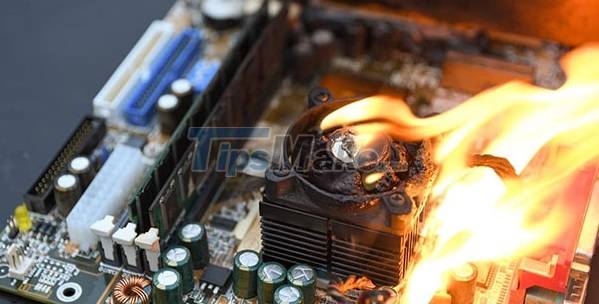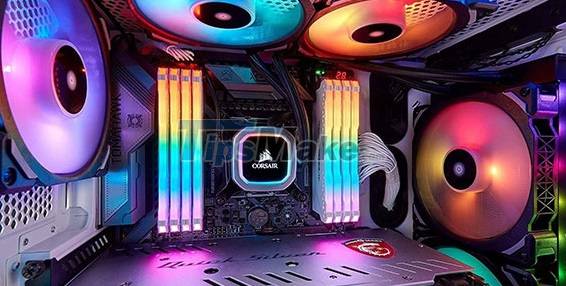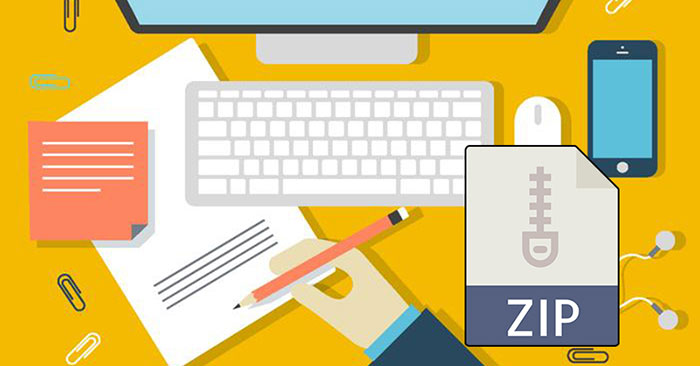What is 'Thermal Throttling'?
Overheating of a computer can lead to a performance drop, also known as 'Throttling' or 'Thermal Throttling'. So what does this concept mean, and how can you avoid it?
Thermal Throttling helps protect hardware
Critical components responsible for computation and processing in a computer system such as the CPU, GPU, and even memory modules (RAM) generate heat during use. When you perform heavy tasks, especially for a long period of time, they generate more heat, which in turn can lead to overheating. Under such constant high temperatures, it is quite possible for these components to be permanently damaged.
Therefore, when a component in a PC rig reaches a high enough temperature, performance is limited to prevent heat build-up and at the same time reduce the load on the cooling system. Components can only run safely at the maximum allowable temperature. The job of the cooling systems is to keep this heat level below the 'red limit'. Otherwise, Throttling will occur.

"Throttling" in this context can be understood as "performance reduction" in the form of a reduction in clock speed, thereby reducing heat. Your GPU or CPU will run slower, resulting in a drop in system performance. For example, you may experience a slight slowdown in the user interface, while the frame rate in games will also be reduced.
More serious signs of overheating include crashes, laggy and distorted images on the screen, or sudden system reboots.
In other words, too high a temperature will affect the performance of the system. The automatic reduction of CPU clock (Throttling), or even a sudden power off will help reduce the temperature, limit hardware damage.
Devices with poor cooling systems are prone to Throttling
Although high-end graphics cards and processors can generate a lot of heat during work, you can still prevent Throttling by improving the system's active heat dissipation. In addition, you can also use a system monitoring tool like MSI Afterburner to see GPU and CPU clock speeds, thereby assessing whether the system is suffering from Throttling.
In general, this phenomenon is not limited to PCs. Many tablets and smartphones also experience Throttling because they are not equipped with active cooling systems (such as cooling fans, liquid cooling). These devices mainly rely on passive cooling, so are only suitable for light tasks.
However, the increasingly powerful mobile chips have also led to manufacturers being forced to equip more modern active cooling systems in portable devices such as smartphones and tablets. .

Avoid Throttling
Ambient temperature can play a big role in how well your PC, tablet or smartphone can cool itself. In other words, the cooler the surroundings, the better.
Besides, you can also consider investing, upgrading the active cooling system mounted inside or even outside the device. Take a moment to understand, the ability to escape air inside the chassis is also something you should do.
You should read it
- 3 ways to prevent GPU Thermal Throttling
- PCIe 5 NVMe SSD vulnerable to thermal throttling, shutting down due to overheating
- Steps to enable/disable Power Throttling in Windows 10
- Steps to recheck thermal paste for computer CPU
- Battery saving tips in Windows 10 with Power Throttling feature
- How to Apply Thermal Paste
- What is thermal paste?
- Causes of GPU overheating and how to fix it
- How much CPU temperature is overheating?
- How to Clean Thermal Paste
- How to effectively fix iPhone overheating
- Top 5 best heat sinks 2019
May be interested

What is the LDAC audio standard? How does it work? Highlights of LDAC

What are smart contracts?

What are Zip files? How do Zip files work?

What is the difference between aspect ratio and resolution?

1 liter equals how many ml, kg, m3?

What is Google Tensor? Why did Google develop its own processor for Pixel phones?





 3 ways to prevent GPU Thermal Throttling
3 ways to prevent GPU Thermal Throttling PCIe 5 NVMe SSD vulnerable to thermal throttling, shutting down due to overheating
PCIe 5 NVMe SSD vulnerable to thermal throttling, shutting down due to overheating Steps to recheck thermal paste for computer CPU
Steps to recheck thermal paste for computer CPU What is thermal paste?
What is thermal paste? Steps to enable/disable Power Throttling in Windows 10
Steps to enable/disable Power Throttling in Windows 10 Battery saving tips in Windows 10 with Power Throttling feature
Battery saving tips in Windows 10 with Power Throttling feature